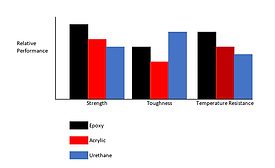Columns
Ask Dr. Dave
Which adhesives can resist serious vibration and shocks?
Read More
Strategic Solutions
Assembly with Adhesives
Three key steps must be undertaken when considering the use of adhesives in assembly operations.
October 11, 2021
From the Editor
Moving the Adhesives and Sealants Industry Forward
The adhesives and sealants industry relies heavily on distributors for far more than simply raw materials and chemicals shipments.
September 23, 2021
Ask Dr. Dave
Bonding Fluoroplastic Parts to Metals
We manufacture PTFE and other fluoroplastic parts. We have been requested to make parts that can be bonded to metals. Is there a good adhesive, some sort of additive to the PTFE, or a surface treatment that we can use?
September 21, 2021
Ask Dr. Dave
Adhesives for Fiberglass Bonding
What are the best adhesives for bonding fiberglass components?
July 20, 2021
Ask Dr. Dave
Moisture-Sensitive Urethane Adhesives and the Pros and Cons of Epoxies
Dr. Dave tackles two questions this month, one related to package stability for moisture-sensitive urethane adhesives, and the other regarding epoxy adhesives.
June 15, 2021
From the Editor
Adhesives and Sealants Help Brands Achieve the Complete Package
Brands are exploring sustainable packaging as a means of increasing their appeal to environmentally conscious consumers.
May 21, 2021
Strategic Solutions
COVID-19 Impact on Global Shipping and Packaging Dynamics
The continued transition away from brick-and-mortar to ecommerce brings demand for packaging innovations that enable faster delivery and better content protection from shock or temperature variations.
May 19, 2021
Ask Dr. Dave
Packaging Moisture-Sensitive Sealants
Can you recommend suitable materials for packaging a sealant that is sensitive to atmospheric moisture? Additionally, we can do accelerated humidity testing of filled packages, but how do we correlate these with shelf life?
May 17, 2021
Ask Dr. Dave
Superglues vs. Polyurethane Glues
Should I use superglue or one of the new polyurethane glues for general-purpose assembly and home repairs?
April 19, 2021
Keep the info flowing with our eNewsletters!
Get the latest industry updates tailored your way.
JOIN TODAY!Copyright ©2025. All Rights Reserved BNP Media.
Design, CMS, Hosting & Web Development :: ePublishing







